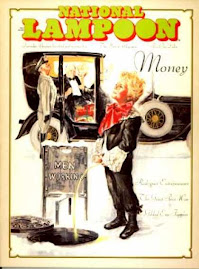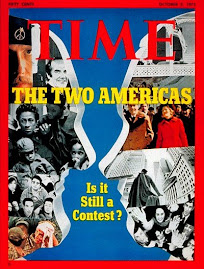Confessions of Wal-Mart Hitman
Wal-Mart and Health Care
Download the Wal-Mart and Health Care Flyer - PDF
Wal-Mart’s Health Care Plan Fails to Cover Over 775,000 Employees
* Wal-Mart reported in January 2006 that its health insurance only covers 43% of their employees. Wal-Mart has approximately 1.39 million US employees. [http://www.walmartfacts.com/docs/1625_jan2006healthcarebackgrounders_576890240.pdf]
Wal-Mart’s Health Insurance Falls Far Short of Other Large Companies
* On average for 2005, large companies (200 or more workers) cover approximately 66% of their employees. If Wal-Mart was to reach the average coverage rate, Wal-Mart should be covering an additional 318,000 employees [Kaiser Family Foundation, 2005 and http://www.walmartfacts.com/docs/1625_jan2006healthcarebackgrounders_576890240.pdf].
Wal-Mart’s Health Care Eligibility is Restrictive
* Part-timers—anybody below 34 hours a week – must wait 1 year before they can enroll. Moreover, spouses of part-time employees are ineligible for family health care coverage for 2006. [Wal-Mart Stores, “My Benefits, New Peak Time Benefits Making ad Difference For You,” 2006]
* Full-time hourly employees must wait 180 days (approximately 6 months) before being able to enroll in Wal-Mart’s health insurance plan. Managers have no waiting period. [Wal-Mart 2006 Associate Guide]
* Nationally, the average wait time for new employees to become eligible is 1.7 months. For the retail industry it is 3.0 months. [Kaiser Family Foundation & Health Research and Educational Trust, 2005]
All of Wal-Mart’s Health Plan’s Are Too Costly for Its Workers to Use
* Since the average full-time Wal-Mart employee earned $17,114 in 2005, he or she would have to spend between 7 and 25 percent of his or her income just to cover the premiums and medical deductibles, if electing for single coverage. [Wal-Mart 2006 Associate Guide and UFCW analysis]
* The average full-time employee electing for family coverage would have to spend between 22 and 40 percent of his or her income just to cover the premiums and medical deductibles. These costs do not include other health-related expenses such as medical co-pays, prescription coverage, emergency room deductibles, and ambulance deductibles. [Wal-Mart 2006 Associate Guide and UFCW Analysis].
* Wal-Mart trumps the affordability of its new health care plan. According to Wal-Mart, “In January [2006], …Coverage will be available for as little as $22 per month for individuals” [www.walmartfacts.com]
* What Wal-Mart’s website leaves out: Coverage is affordable, but using it will bankrupt many employees. Wal-Mart’s most affordable plan for 2006 includes a $1,000 deductible for single coverage and a $3,000 deductible for family coverage ($1,000 deductible per person covered up to $3,000). [Wal-Mart 2006 Associate Guide]
Wal-Mart Admits Public Health Care is a “Better Value”
* President and CEO Lee Scott said in 2005, "In some of our states, the public program may actually be a better value - with relatively high income limits to qualify, and low premiums." [Transcript Lee Scott Speech 4/5/05]
Wal-Mart’s Health Care is Getting Costlier
* Between 2000-2005, the cost of premiums rose 169 percent for single coverage and 117 percent for family coverage. [UFCW analysis of annual Wal-Mart Associate Guides].
* In comparison, premiums for family coverage in the U.S. have increased only by 59%, from 2000-2005. [Employer Health Benefits: 2004 Annual Survey, Kaiser Family Foundation & Health Research and Educational Trust, 2004] Wal-Mart Employees Pay More for Health Care Costs
* In 2004, Wal-Mart employees, in total, paid approximately 41% of the plan costs [Wal-Mart IRS 5500 Filings, 2005].
* Nationally for 2004 on average employees paid for only 16% of single coverage costs and 28% of family coverage costs [Kaiser Family Foundation, 2005].
Wal-Mart Covers Less of the Health Care Costs Compared to Its Competitors
* In a state analysis, the Massachusetts Department of Health and Human Services found that in 2003, Wal-Mart covered only 52% of total health care premium costs compared to K-Mart which covered 66%, Target which covered 68%, and Sears which covered 80% [“Employers Who Have 50 or More Employees Using Public Health Assistance,” Division of Health Care Finance and Policy, 2/2005]
Wal-Mart’s Spending Falls Below Industry Standards
* Wal-Mart’s spending on health care for its employees falls well below industry and national employer averages. In 2002, as reported in the Wall Street Journal, Wal-Mart spent an average of $3,500 per employee. By comparison, the average spending per employee in the wholesale/retailing sector was $4,800. For U.S. employers in general, the average was $5,600 per employee, Therefore, Wal-Mart’s average spending on health benefits for each covered employee was 27% less than the industry average and 37% less than the national average. [Bernard Wysocki, Jr. and Ann Zimmerman, “Wal-Mart Cost-Cutting Finds a Big Target in Health Benefits,” Wall Street Journal September 30, 2003 p1]
Wal-Mart Only Spends 77 Cents an Hour Per Employee for Health Benefits
* In 2004, Wal-Mart spent $1.5 billion on its health insurance. This amounts to an employer contribution of around only $0.77 an hour per employee. This accounts for approximately a half-percent of Wal-Mart's $285 billion in sales in 2004. [Susan Chambers, Wal-Mart Internal Memo, 2005, Wal-Mart Annual Report, 2005].
Wal-Mart Increased Advertising More Than Health Care
* In 2004, Wal-Mart spent nearly the same amount on advertising as it did on health insurance. In 2004, Wal-Mart reports that it spent $1.5 billion on health care benefits and $1.4 billion in advertising. [Wal-Mart Annual Report 2005, Susan Chambers, Wal-Mart Internal Memo, 2005]
* Between 2003 and 2004, Wal-Mart increased its advertising budget by $434 million, only increasing its spending on employee health care by $100 million. That means Wal-Mart increased its spending on advertising by 45 percent while only increasing its spending on employee health care by 7 percent. [Wal-Mart Annual Report 2005, Susan Chambers, Wal-Mart Internal Memo, 2005]
* In fact, Wal-Mart has consistently increased spending on advertising more than its spending on employee health care. Between 2002 and 2003, Wal-Mart put more new funds into advertising than into health care. Wal-Mart increased spending on advertising by $290 million, while only increasing health care spending by $215 million for the same period. (note: this also occurred in 1995-96, 1997-98,1998-1999). [Wal-Mart Annual Reports and 5500 Filings]
One Out of Six Wal-Mart Employees Has No Health Care Coverage At All
* This is more than double the national percentage for large firms (firms with over 100 employees). In fact, we estimate that Wal-Mart accounted in 2005 for more than 1 out of every 40 uninsured workers who are employed at a large firm. [Susan Chambers, Wal-Mart Internal Memo, 2005; Wal-Mart Annual Report; “Employer-Sponsored Health Insurance Coverage: Sponsorship, Eligibility, and Participation Patterns in 2001,” Bowen Garrett, Ph.D., released by the Kaiser Family Foundation September 2004].
Back to top
Costs to Taxpayers
Download the Wal-Mart and Cost to Taxpayers fact sheet - PDF
Your tax dollars pay for Wal-Mart's greed
* The estimated total amount of federal assistance for which Wal-Mart employees were eligible in 2004 was $2.5 billion. [The Hidden Price We All Pay For Wal-Mart, A Report By The Democratic Staff Of The Committee On Education And The Workforce, 2/16/04]
* One 200-employee Wal-Mart store may cost federal taxpayers $420,750 per year. This cost comes from the following, on average:
o $36,000 a year for free and reduced lunches for just 50 qualifying Wal-Mart families.
o $42,000 a year for low-income housing assistance.
o $125,000 a year for federal tax credits and deductions for low-income families.
o $100,000 a year for the additional expenses for programs for students.
o $108,000 a year for the additional federal health care costs of moving into state children's health insurance programs (S-CHIP)
o $9,750 a year for the additional costs for low income energy assistance.
[The Hidden Price We All Pay For Wal-Mart, A Report By The Democratic Staff Of The Committee On Education And The Workforce, 2/16/04]
Health care subsidies compared to executive compensation
* Excluding his salary of $1.2 million, in 2004 Wal-Mart CEO Lee Scott made around $22 million in bonuses, stock awards, and stock options in 2004.
* This $22 million could reimburse taxpayers in 3 states where Wal-Mart topped the list of users of state-sponsored health care programs, covering more than 15,000 Wal-Mart employees and dependents. [Wal-Mart Proxy Statement and News Articles GA, CT, AL].
Your tax dollars subsidize Wal-Mart's growth
* The first ever national report on Wal-Mart subsidies documented at least $1 billion in subsidies from state and local governments.
* A Wal-Mart official stated that “it is common” for the company to request subsidies “in about one-third of all [retail] projects.” This would suggest that over a thousand Wal-Mart stores have been subsidized. [“Shopping For Subsidies: How Wal-Mart Uses Taxpayer Money to Finance Its Never-Ending Growth,” Good Job First, May 2004]



























No comments:
Post a Comment